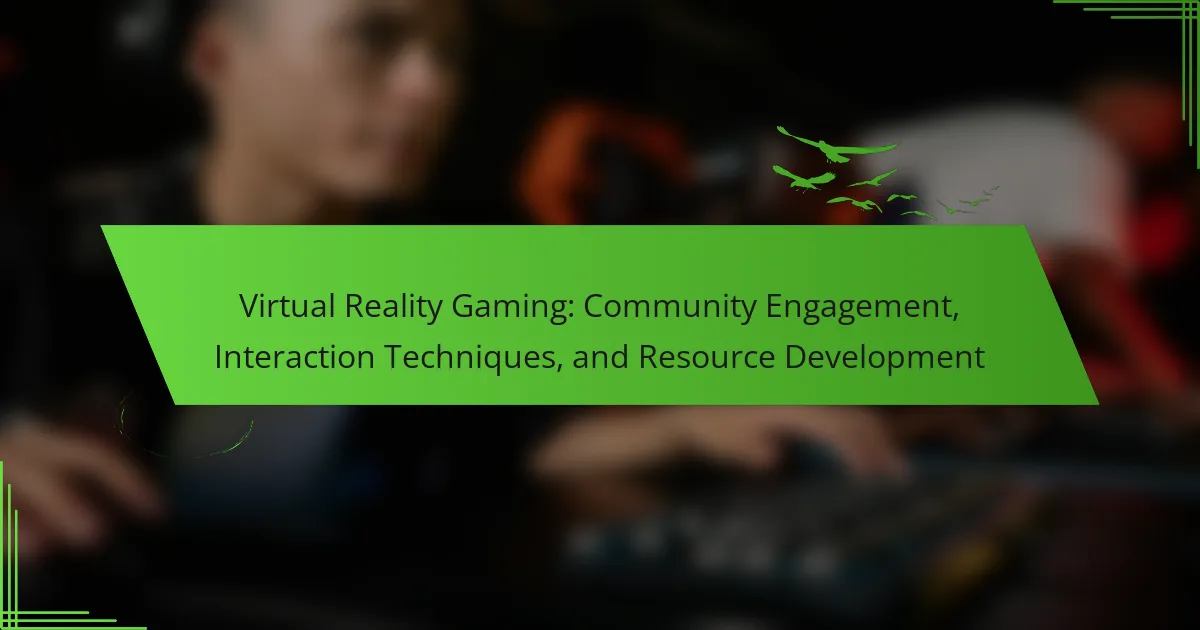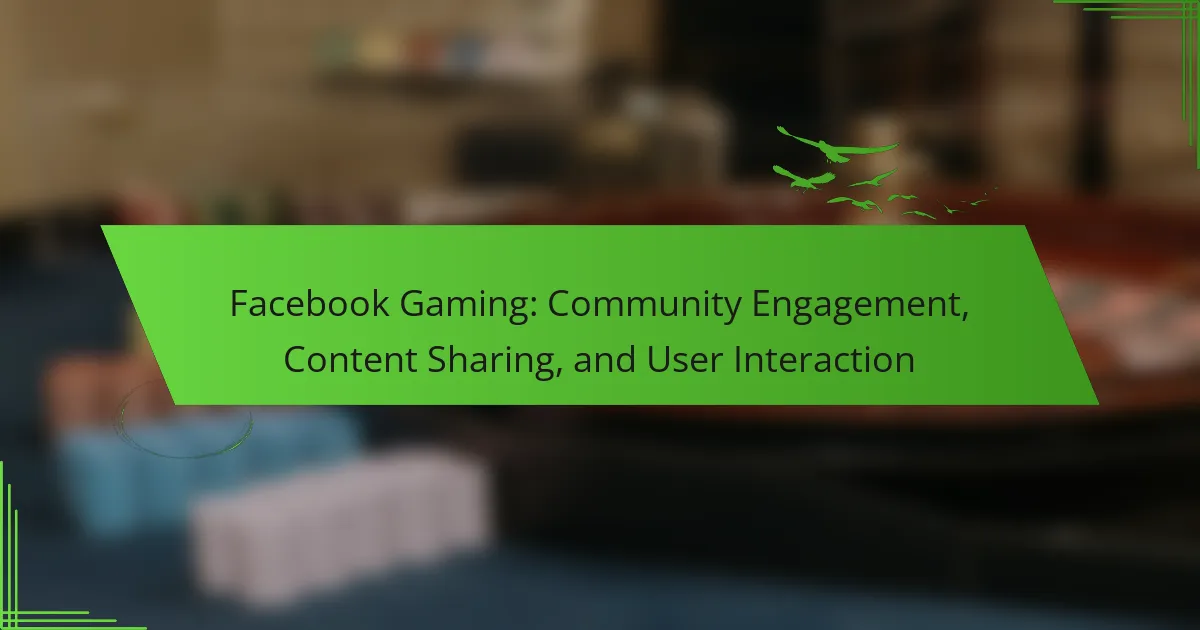Virtual reality gaming enhances community engagement through immersive social interactions and collaborative gameplay. Effective interaction techniques like hand tracking and voice commands improve player immersion. Resource development, including advancements in hardware and software, shapes the future of these gaming experiences. Emerging trends focus on community-driven content creation and cross-platform integration, redefining how players connect in virtual environments.

How does virtual reality gaming enhance community engagement?
Virtual reality gaming significantly enhances community engagement by fostering immersive social interactions. Players connect in virtual environments, creating shared experiences that strengthen relationships. This engagement is amplified through collaborative gameplay, where teamwork and communication are essential. Additionally, virtual reality platforms often include social hubs, allowing players to meet and interact beyond the game itself. As a result, these environments cultivate a sense of belonging and community among participants.
What are the key benefits of community involvement in VR gaming?
Community involvement in VR gaming enhances social connections, fosters collaboration, and boosts user retention. Engaged players create a vibrant ecosystem, sharing experiences and resources. This interaction leads to innovative gameplay and community-driven content, enriching the overall experience. Furthermore, active communities can provide valuable feedback, driving game improvements and updates.
Which platforms foster collaborative experiences in virtual reality?
Several platforms foster collaborative experiences in virtual reality, enhancing community engagement. Notable examples include VRChat, AltspaceVR, Rec Room, and Facebook Horizon. Each platform offers unique interaction techniques, such as customizable avatars, immersive environments, and social events. These features promote resource development and strengthen user connections.
How do cultural differences influence community dynamics in VR gaming?
Cultural differences significantly shape community dynamics in VR gaming by influencing interaction styles and engagement levels. Players from diverse backgrounds bring unique perspectives, which can enhance collaboration and creativity. For instance, communication preferences vary; some cultures prioritize directness while others value indirect approaches. This diversity can lead to richer experiences but may also create misunderstandings. Additionally, cultural norms affect gameplay strategies and social behaviors, impacting how communities form and evolve. Understanding these differences fosters inclusivity and improves overall community cohesion in virtual environments.
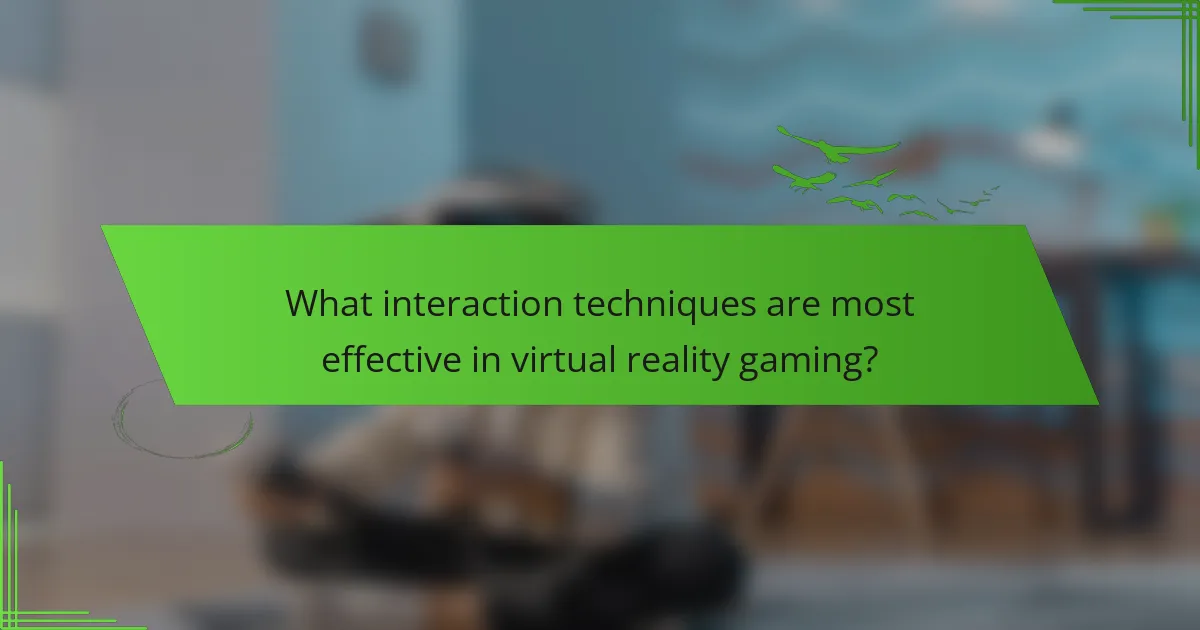
What interaction techniques are most effective in virtual reality gaming?
Effective interaction techniques in virtual reality gaming include hand tracking, voice commands, and haptic feedback. These methods enhance immersion and player engagement significantly. Hand tracking allows for natural movements, making gameplay intuitive. Voice commands enable quick interactions without physical controllers, streamlining gameplay. Haptic feedback provides tactile responses, enriching the sensory experience. Together, these techniques create a more engaging and interactive gaming environment.
How do gesture-based controls impact player immersion?
Gesture-based controls significantly enhance player immersion in virtual reality gaming. These controls create a more intuitive and natural interaction with the virtual environment. Players can physically move and manipulate objects, which deepens their emotional connection to the game.
The immersive experience is amplified through the seamless integration of real-world gestures. This alignment with natural human behavior allows players to feel more present and engaged. As a result, the sense of agency increases, making gameplay more compelling.
Moreover, gesture-based controls can foster community engagement by enabling cooperative gameplay. Players can communicate and collaborate more effectively through shared physical actions. This interaction technique not only enriches individual experiences but also strengthens social bonds within the gaming community.
In summary, gesture-based controls transform virtual reality gaming by enhancing immersion, increasing agency, and promoting community interaction.
What role does voice communication play in enhancing gameplay experience?
Voice communication significantly enhances gameplay experience in virtual reality gaming by fostering real-time interaction and community engagement. It allows players to coordinate strategies, share experiences, and build relationships, creating an immersive environment. Effective voice communication can lead to improved teamwork and increased player satisfaction. Additionally, it provides a unique attribute of personalization, as players can express their individuality through voice modulation and tone. This interaction technique not only deepens the gaming experience but also encourages resource development, such as player-created content and community support systems.
Which innovative interaction methods are emerging in 2025?
Emerging interaction methods in virtual reality gaming for 2025 include advanced haptic feedback, AI-driven NPC interactions, and immersive social spaces. These innovations enhance community engagement and resource development. Haptic feedback allows players to physically feel in-game actions, creating a deeper connection. AI-driven NPCs adapt to player behavior, offering personalized experiences. Immersive social spaces foster real-time collaboration and interaction, transforming how players connect and share experiences.
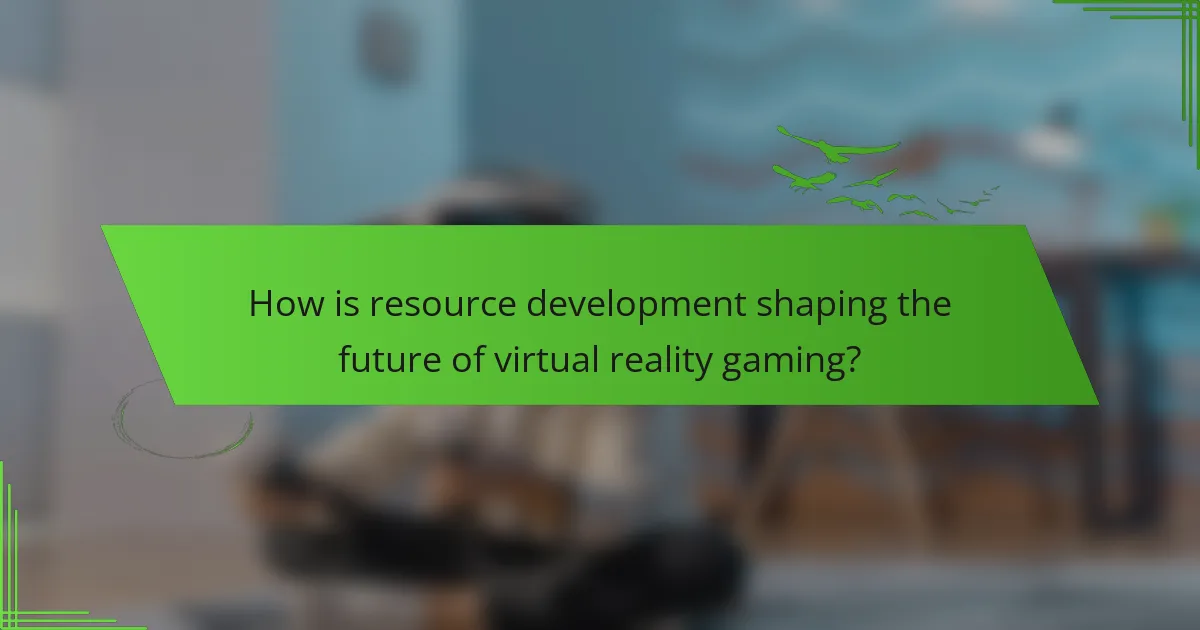
How is resource development shaping the future of virtual reality gaming?
Resource development is significantly shaping the future of virtual reality gaming by enhancing immersive experiences and community engagement. Advancements in hardware, such as improved headsets and motion tracking, allow for more realistic interactions. Software developments, including AI-driven environments and social platforms, foster deeper connections among players. As a result, resource allocation towards these technologies is crucial for creating engaging and interactive virtual worlds. Additionally, funding for indie developers encourages innovation, leading to unique gaming experiences that differentiate offerings in the market.
What are the essential resources for developers in the VR gaming industry?
Developers in the VR gaming industry require essential resources such as software development kits (SDKs), game engines, and community forums. SDKs like Oculus SDK and SteamVR provide tools for building VR experiences. Game engines such as Unity and Unreal Engine offer robust platforms for development. Community forums and platforms like Reddit and Discord facilitate collaboration and knowledge sharing among developers. These resources enhance creativity, technical skills, and networking opportunities in virtual reality gaming.
How do funding models differ for VR gaming projects across regions?
Funding models for VR gaming projects vary significantly across regions due to economic conditions, cultural preferences, and industry maturity. In North America, venture capital and crowdfunding dominate, while Europe sees a mix of government grants and private investments. Asia often relies on strategic partnerships with tech companies. Each model influences project scalability and community engagement strategies. For example, European projects may focus more on artistic expression, while North American projects often prioritize market viability.
Which organizations are leading the way in VR gaming resource development?
Leading organizations in VR gaming resource development include Oculus, HTC, Sony, Valve, Unity Technologies, and Epic Games. These companies drive innovation through advanced technology, community engagement, and diverse resource offerings. Oculus focuses on hardware and software integration, while HTC emphasizes immersive experiences. Sony leverages its PlayStation platform for VR content. Valve is known for its SteamVR ecosystem, and Unity Technologies and Epic Games provide essential development tools for creators.
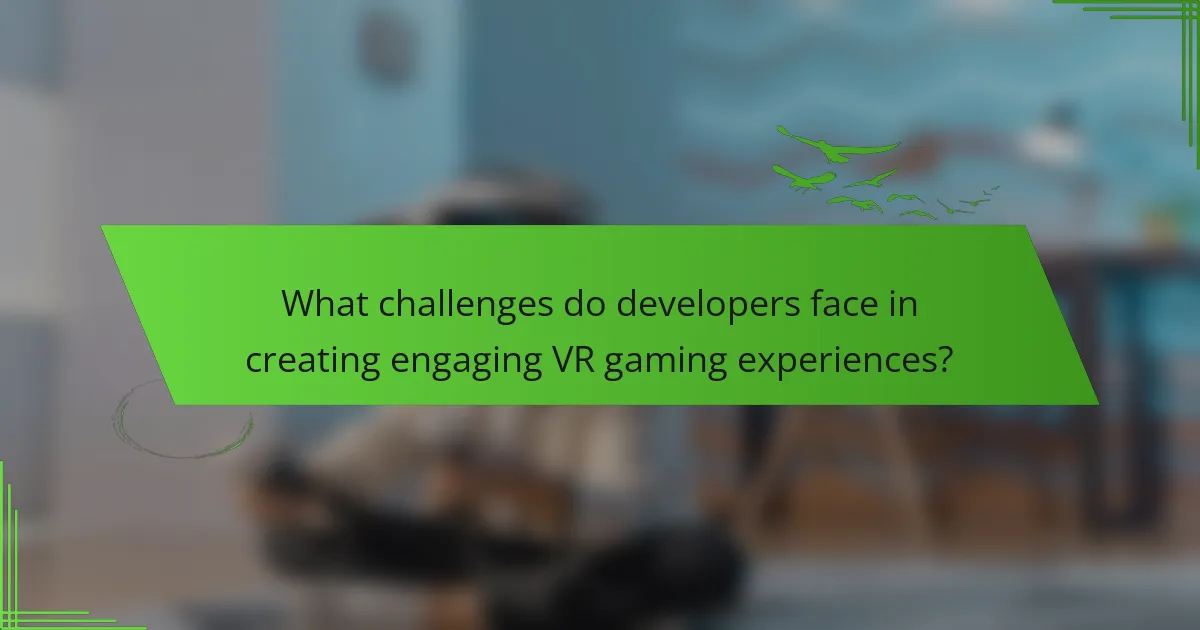
What challenges do developers face in creating engaging VR gaming experiences?
Developers face several challenges in creating engaging VR gaming experiences, including technical limitations, user comfort, and content creation. Technical limitations often arise from hardware constraints, impacting graphics and performance. User comfort is critical; developers must minimize motion sickness and ensure intuitive controls. Content creation is resource-intensive, requiring specialized skills in 3D modeling and sound design. Additionally, ensuring social interaction in VR can be complex, as developers need to create environments that foster community engagement.
How do technical limitations affect gameplay and user experience?
Technical limitations significantly impair gameplay and user experience in virtual reality gaming. These limitations can lead to issues such as motion sickness, latency, and reduced immersion. For instance, high latency can disrupt the sense of presence, making interactions feel unnatural. Additionally, insufficient hardware capabilities may restrict the quality of graphics and sound, diminishing overall engagement. Moreover, limited tracking precision can hinder user movements, affecting gameplay fluidity. Addressing these technical challenges is essential for enhancing community engagement and interaction techniques in virtual reality environments.
What are the most common user feedback issues in VR gaming?
Common user feedback issues in VR gaming include motion sickness, limited content variety, and social interaction challenges. Users often report discomfort during gameplay, which can detract from the immersive experience. Additionally, many players seek more diverse game genres and narratives to enhance engagement. Lastly, difficulties in communicating with others in virtual environments can hinder community building and interaction.
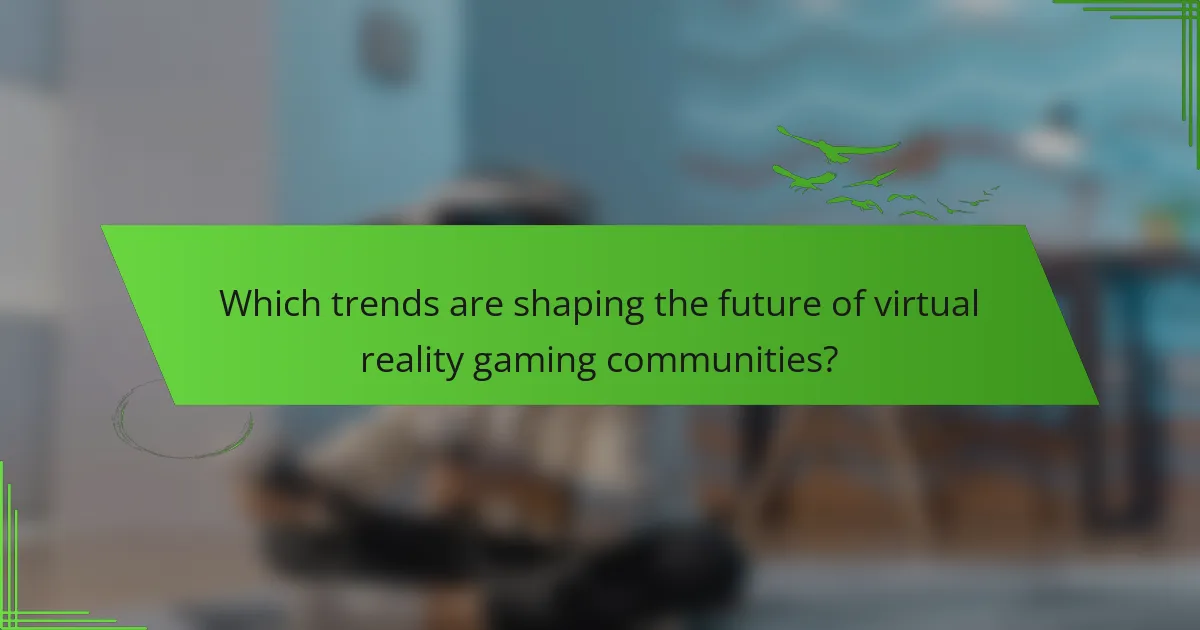
Which trends are shaping the future of virtual reality gaming communities?
Emerging trends in virtual reality gaming communities focus on enhanced social interaction and resource sharing. Community-driven content creation is gaining traction, allowing players to contribute to game development. Cross-platform integration is also shaping interactions, enabling players from different systems to engage seamlessly. Additionally, the rise of virtual events fosters real-time collaboration and competition, enhancing community bonds. As a result, these trends are redefining how players connect and interact within virtual environments.
How are social media platforms influencing VR gaming interactions?
Social media platforms significantly enhance VR gaming interactions by fostering community engagement and collaboration. They facilitate real-time communication, allowing players to share experiences and strategies. Additionally, social media enables the development of user-generated content, enriching the gaming environment. This integration helps build a sense of belonging among players, enhancing overall engagement.
What emerging technologies are expected to transform community engagement in VR gaming?
Emerging technologies like AI, blockchain, and 5G are set to transform community engagement in VR gaming. AI enhances personalized experiences and adaptive interactions, fostering deeper connections among players. Blockchain enables secure ownership of in-game assets, promoting trust and community-driven economies. 5G technology ensures seamless connectivity, allowing for more immersive multiplayer experiences. These advancements will redefine how players interact and collaborate within virtual environments, enhancing community dynamics.
Which unique attributes distinguish successful VR gaming communities?
Successful VR gaming communities are distinguished by strong social interaction, inclusive environments, and active resource sharing. These communities foster collaboration through regular events and forums, enhancing player engagement. Unique attributes include dedicated moderators who guide discussions and maintain a positive atmosphere, as well as tailored content that addresses specific player interests. Additionally, the integration of user-generated content encourages creativity and personal investment in the community.
What best practices should developers follow for optimal community engagement in VR gaming?
Developers should prioritize active communication, regular updates, and collaborative events for optimal community engagement in VR gaming. Establishing clear channels for feedback fosters a sense of belonging.
Incorporating user-generated content enhances interaction and investment in the community. Providing tools for players to create and share their experiences can lead to increased engagement.
Hosting regular events, such as tournaments or themed gatherings, encourages participation and strengthens community ties. Developers should actively participate in these events to demonstrate commitment and responsiveness.
Lastly, utilizing analytics to understand player behavior can inform strategies that enhance engagement and retention, ensuring a vibrant and active community.
